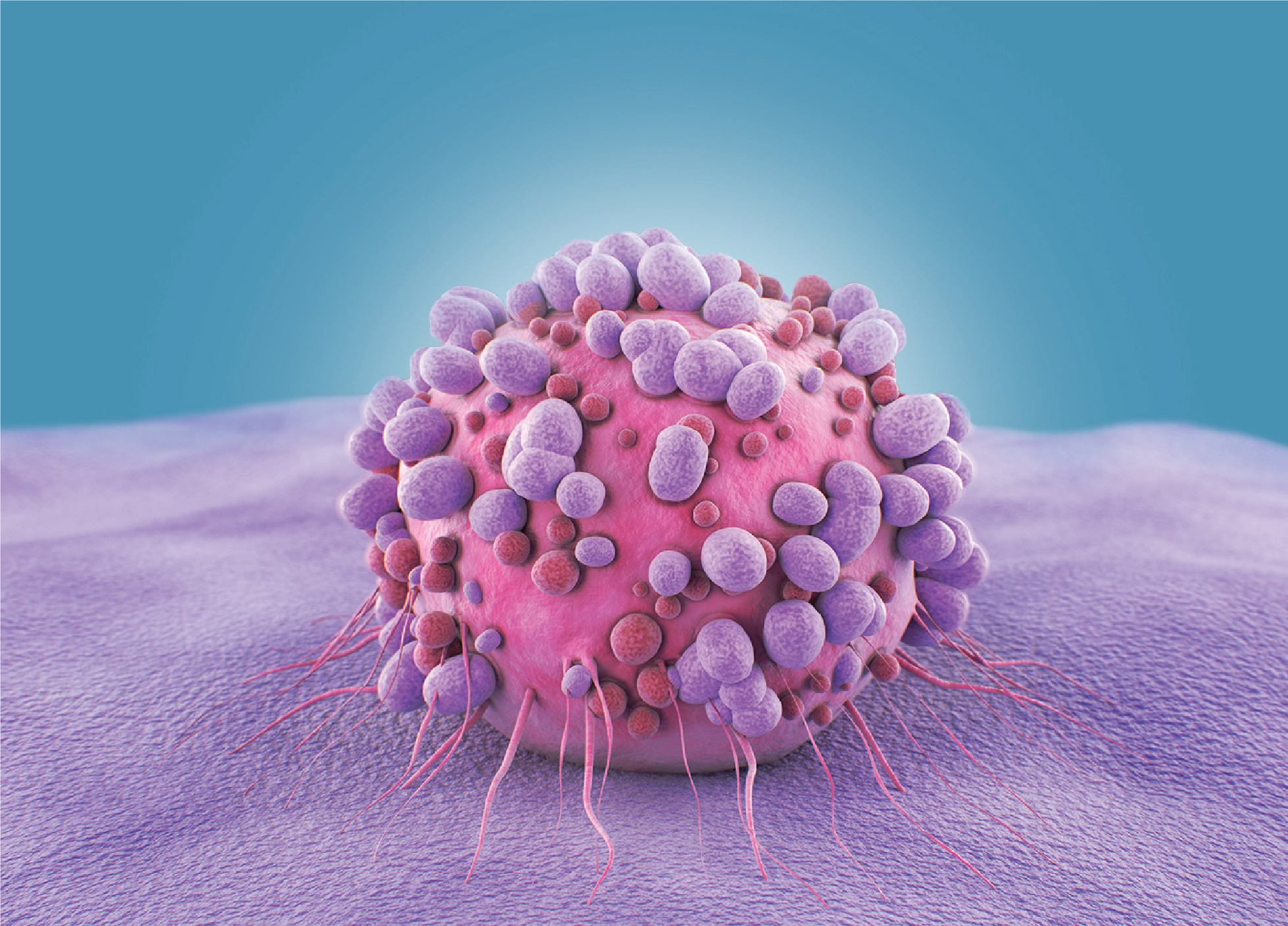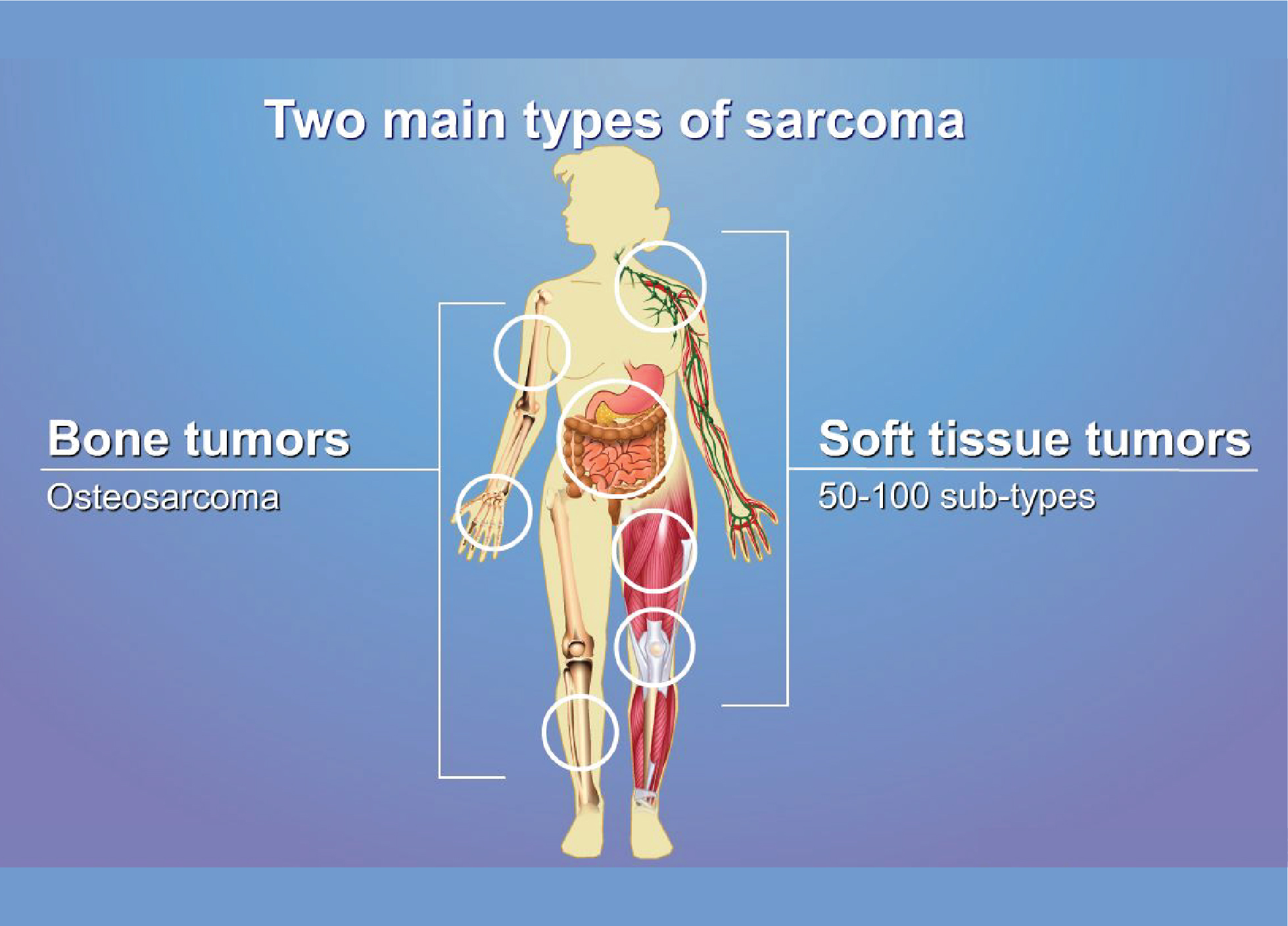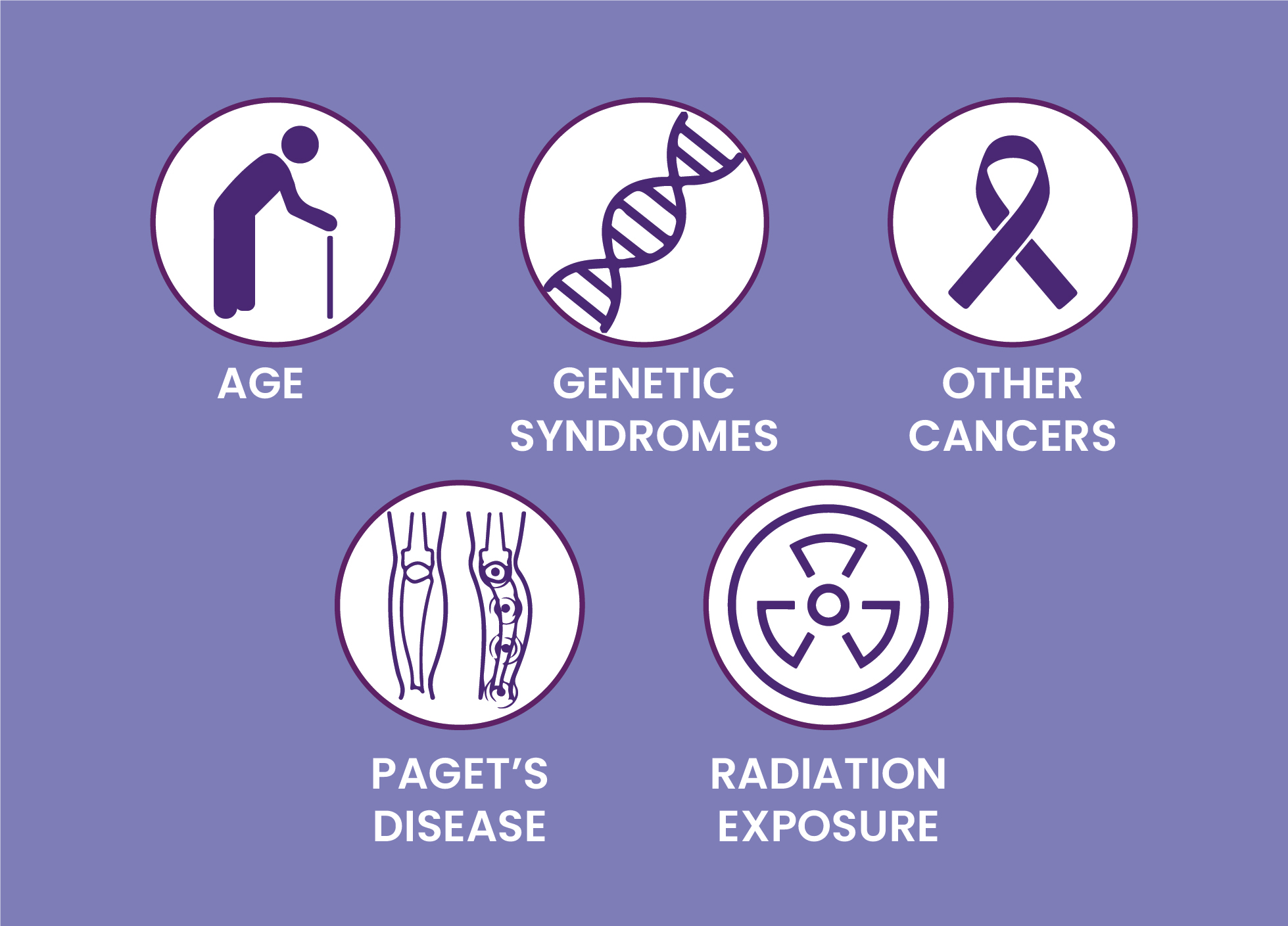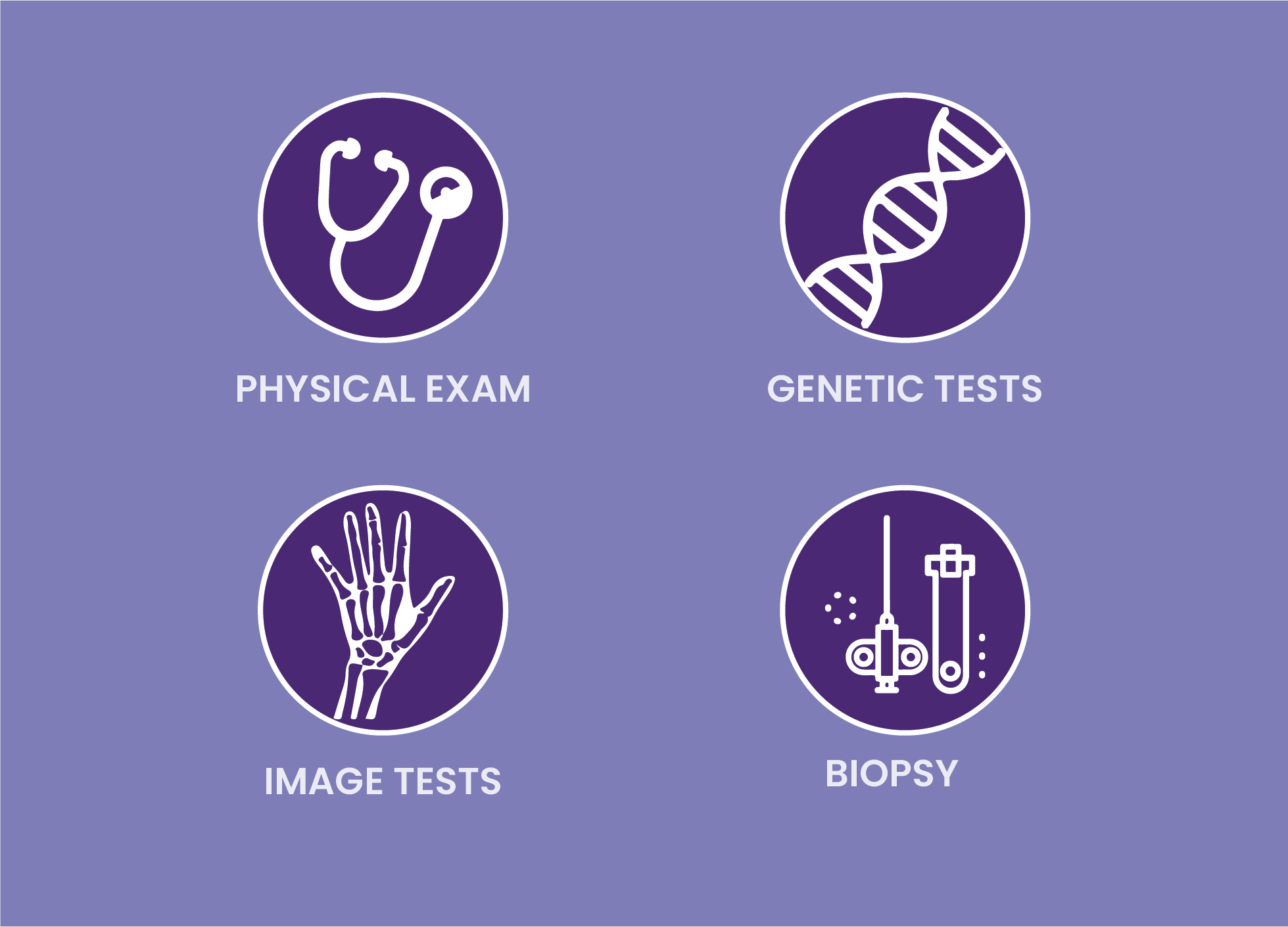Sarcomas Cancer
Introduction
Sarcomas are rare cancers that develop in the bones and soft tissues, including fat, muscles, blood vessels, nerves, deep skin tissues, and fibrous tissues.Sarcoma is a type of cancer that develops from transformed cells of the area of connective tissue. These tissues consist of bone, cartilage, fat, vascular, or hematopoietic tissues. The occurrence of sarcomas can happen in any of these types of tissues. Sarcoma can develop on any part of your body. And, it is a very different and rare type of cancer.


Types of Sarcoma Cancer
Sarcomas are categorized as soft tissue or bone sarcomas, depending on where they develop in the body.
Causes
There are no specific attributable factors that can be linked to causing soft tissue or bone sarcomas.However, there are a few factors that could increase the chances of developing sarcomas.
Risk factor
Certain factors that increase the risk of sarcoma include:

Signs & Symptoms
Some sarcomas may not cause any symptoms until they grow and press on neighboring nerves, organs, or muscles. Their growth may cause pain, a feeling of fullness, or breathing problems.
The most common symptoms of bone sarcomas include the following:

Diagnosis
Since sarcoma is complex and can develop in so many places in the body, it can be difficult to diagnose. However, it is important to have an accurate diagnosis of the type and extent of sarcoma.
The diagnosis includes:

Management
Sarcoma is majorly treated by surgery by removing cancer. However, other treatments are used after or before the surgery. Not all surgery types work on all sarcoma as each one is different based on their situation. Some of the most common treatments for sarcoma:
Follow-Up
Follow-up visits for sarcoma are usually scheduled: Every 3 to 6 months for the first 2 to 3 years. Every 6 months for the next 2 years. Once a year after 5 years.
